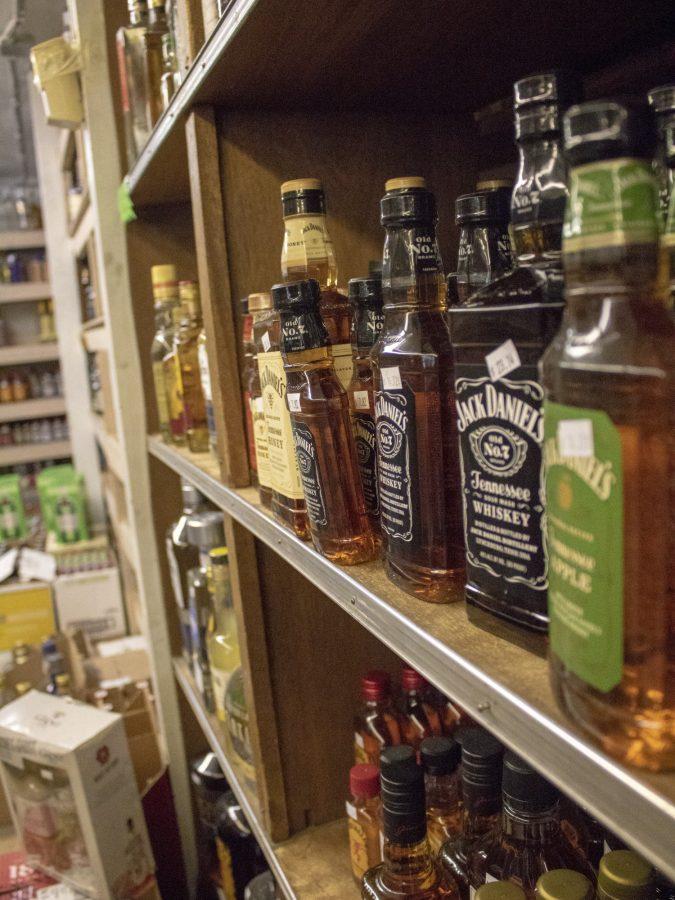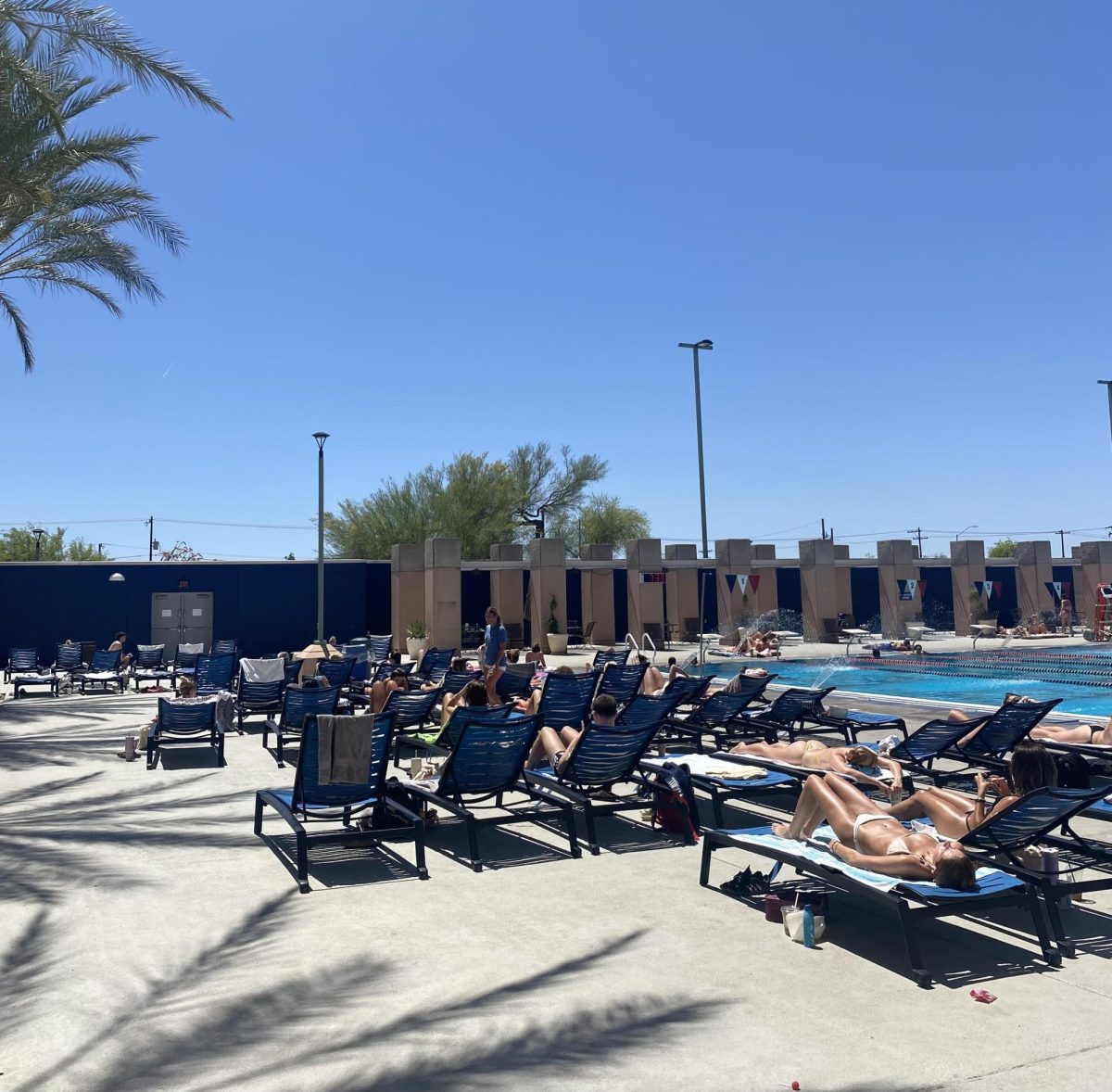As the fall semester comes to a close at the University of Arizona, freshmen have had time to explore the excitement of college life and that may include encounters with drugs and alcohol.
To many, the university has a “drinking culture,” and from the outside it might seem that way.
According to the UA’s 2022 Security and Fire Safety Report, from 2019-2021, there were a total of 107 liquor law arrests and 1,725 liquor law disciplinary action instances in residential facilities.
University of Arizona Police Department Officer Marvin Smith says that while alcohol and drug use are prevalent on campus, the number of citations is highest at the beginning and end of each semester.
Students under 21 who are cited for alcohol use are usually referred to the Student Health Alcohol and Drug Education program; a diversion strategy for students on the first offense, but they can face stiffer consequences if they are cited again.
Before citations and court action, students have the opportunity to use resources on campus that can address issues with alcohol and drugs.
The SHADE program is one of these resources for students, especially freshmen. Students living in university residence halls who are found in violation of the alcohol and marijuana policies are referred to the program, which provides them with resources and education about the effects of alcohol and drugs.
Smith said the program is essentially a one-time pass for students. If they have completed SHADE already and are caught again with alcohol or drugs, the next step is for UAPD to initiate a physical custodial arrest or a paper referral.
But Smith said they try to be understanding in most situations.
“Let’s say we do have a student that’s under 21. Maybe they are intoxicated and we don’t feel that they are in the right state of mind to potentially understand what type of charges they could be facing, we’ll wait at a later date,” Smith said.
“When we deal with alcohol — or drug — related incidents, we always put that student’s health and safety first,” Smith said. “That’s what we’re going to focus on and then once we’re at the point where we feel there’s no longer a health or safety risk, then we will take that disciplinary action.”
Rachel Abraham is the evaluation manager for Campus Health. She is responsible for the yearly Health and Wellness Survey that Campus Health conducts regarding the drinking and drug habits, mental wellness, sexual health and nutrition of students attending UA.
She also works with residence facilities to encourage students to learn on their own about the adverse effects that come with drinking. The idea behind the pre-intervention is to show students that drug and alcohol use is not as common as they might believe.
“We really can express that, hey, not everybody is drinking. Not everybody is vaping, using cannabis,” Abraham said. “Really when it comes to vaping and cannabis, if you’re not using, you’re actually in the majority.”
Abraham is also a former SHADE instructor. She has worked in the diversion program with students who have been cited for consuming alcohol either in the dorms or somewhere on campus while being under the age of 21.
“The program really is intended to focus on that connection over sensation feeling, having the opportunity to really show you don’t always need to drink to have a good time, but if you want to drink, here’s some ways that we can do it a little bit safer,” Abraham said.
Within the program there are presentations, activities and other resources. Abraham says her favorite activity to do with students is a blood alcohol content evaluation. Students pick their drink of choice and calculate how long it takes for their BAC to return to zero.
“I’ve had a couple of students who have gone ‘Wow. I did not realize that I’m most likely waking up for my Friday class with alcohol still in my system,’” Abraham said.
On top of programs for students, there is also data from the Health and Wellness Survey that evaluates the frequency at which students drink, their desire to reduce their drinking and the average blood alcohol content during the year.
“Our average BAC on campus is 0.06. So while in Arizona, the driving limit is zero, we are a zero tolerance state. And so when we see that the average student BAC is 0.06, that’s pretty promising,” Abraham said. “For me, it’s very exciting and positive to see that the drinking culture that we might see on social media doesn’t actually reflect the majority of our students.”
Smith has also instructed the SHADE program and hopes students take advantage of the resources and education available.
“We get a lot of participation from the students asking us questions, wanting clarification, but we also just try and present it as a way of saying, ‘hey, we’re not here to rub it in your face that UAPD arrested you, we’re here as a resource for you all,’” Smith said.
UAPD’s involvement in the SHADE program includes officers and community relations members speaking to students in a relaxed environment where students can ask questions.
“Sometimes it’s, ‘hey, you know, what is it like as an officer? What do you guys look for when you go out on those nights where it could be busy? Or how do you guys handle alcohol-related incidents? Why was I arrested versus why was my friend not arrested?’” Smith said.
Senior Diego Hoffman lived in the Coronado dorm his freshman year and said he wishes he had known more about safe drinking practices earlier.
“I had so many friends that year who came from high school and decided to just let loose,” Hoffman said. “They ended up having a rough first year because they didn’t control themselves.”
Other programs supported by the UA to educate students on safe drinking habits include Project 21, which helps students plan a safe 21st birthday, and The Buzz, which identifies itself as “a fun, highly praised, spirited, informative, connecting, meaningful and relevant alcohol education/prevention program.”
El Inde Arizona is a news service of the University of Arizona School of Journalism.
Follow the Daily Wildcat on Instagram and Twitter/X















